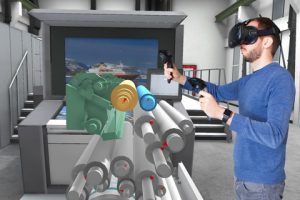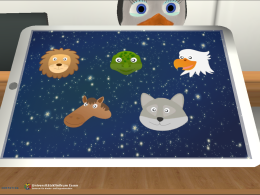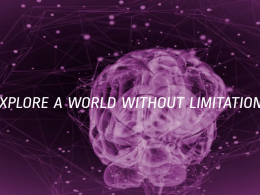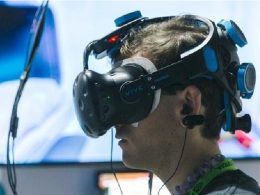The Fraunhofer Institute for Computer Graphics Research (IGD) presents its virtual training tool Machine@Hand for the training of volunteer paramedics.
Similar to pilot training in a flight simulator, in future every trainee in the DRK Herford-Stadt district association will have practised a certain number of hours in the VR ambulance simulator until he or she knows blindfolded what is in every drawer. This is not only intended to ensure operational safety. The aim is also to make training less time-consuming. The virtual training tool Machine@Hand from IGD can significantly reduce the time required for the entire training programme, which can take up to 800 hours.
This is sometimes an important step when it comes to making volunteer work more attractive. This is one of the reasons why Thomas Pilz, digitalisation officer for volunteer work at the DRK Herford-Stadt district association, wants to promote new training methods: "What drives us is the vision of training people in such a way that it fits into today's way of life." Another advantage of virtual training is that an ambulance does not have to be available for every exercise.
New opportunities in all sectors
Machine@Hand was developed as a visual assistance system for the manufacturing industry, where handling and maintenance processes are becoming increasingly demanding and complex. Disassembling and reassembling large machines purely for training purposes is not only very time-consuming and costly, but often logistically almost impossible. This makes training on the real machine extremely complicated. Heidelberger Druckmaschinen AG therefore uses Machine@Hand to train service engineers.

In the virtual training world, which can be operated using VR goggles, a tablet or a smartphone, three-dimensional work instructions are displayed situationally and precisely positioned, creating an authentic learning experience. Setting up the training application is also intuitive and requires no programming knowledge. Based on modular 3D models, the information to be displayed can be defined very easily by fading in and out, highlighting in colour, animating objects and integrating text, images and videos. The trainees are not just consumers, but can add their own comments to the exercise scenarios and share their ideas with others. This collaborative aspect also trains successful teamwork.
Source: rescue service / GDI









